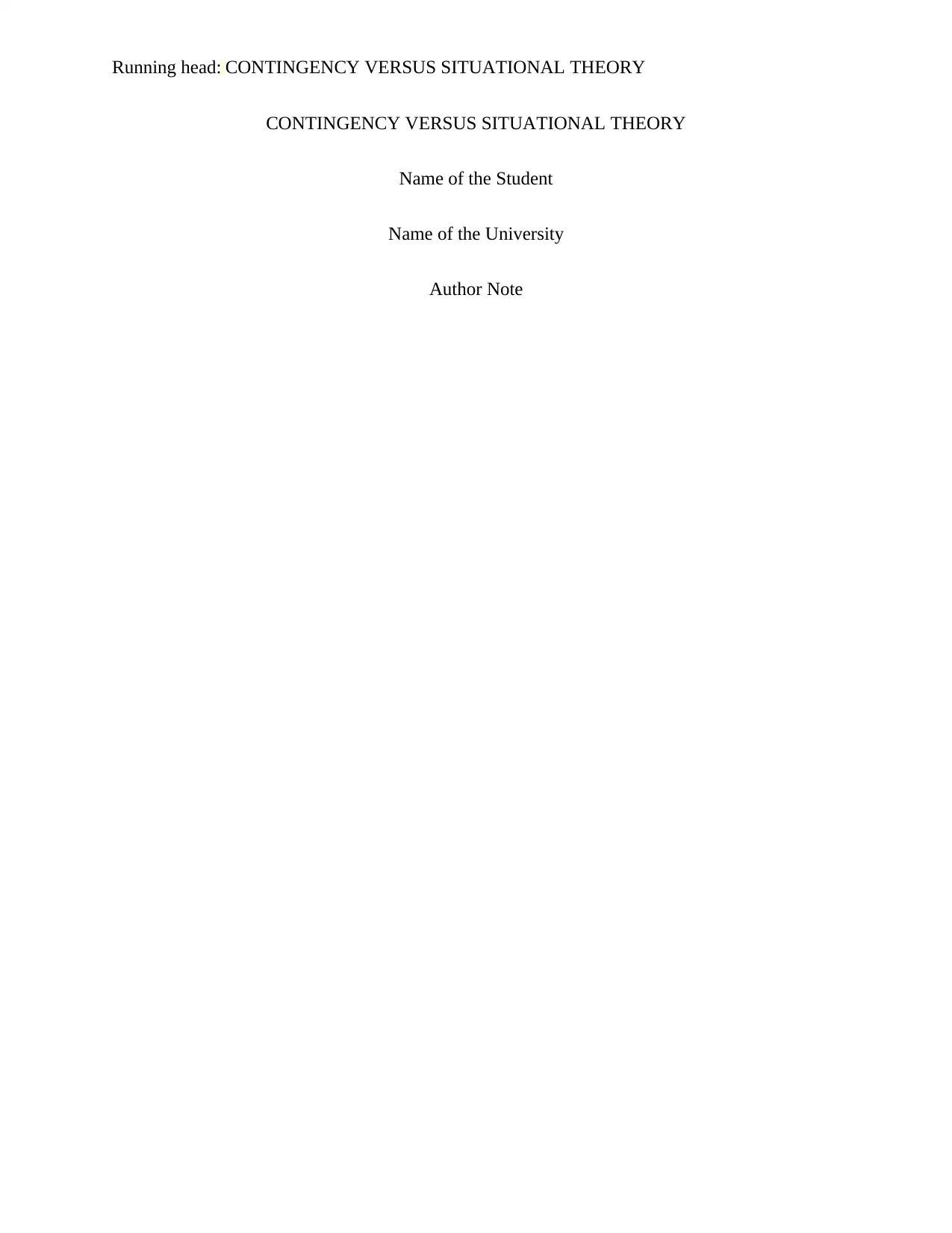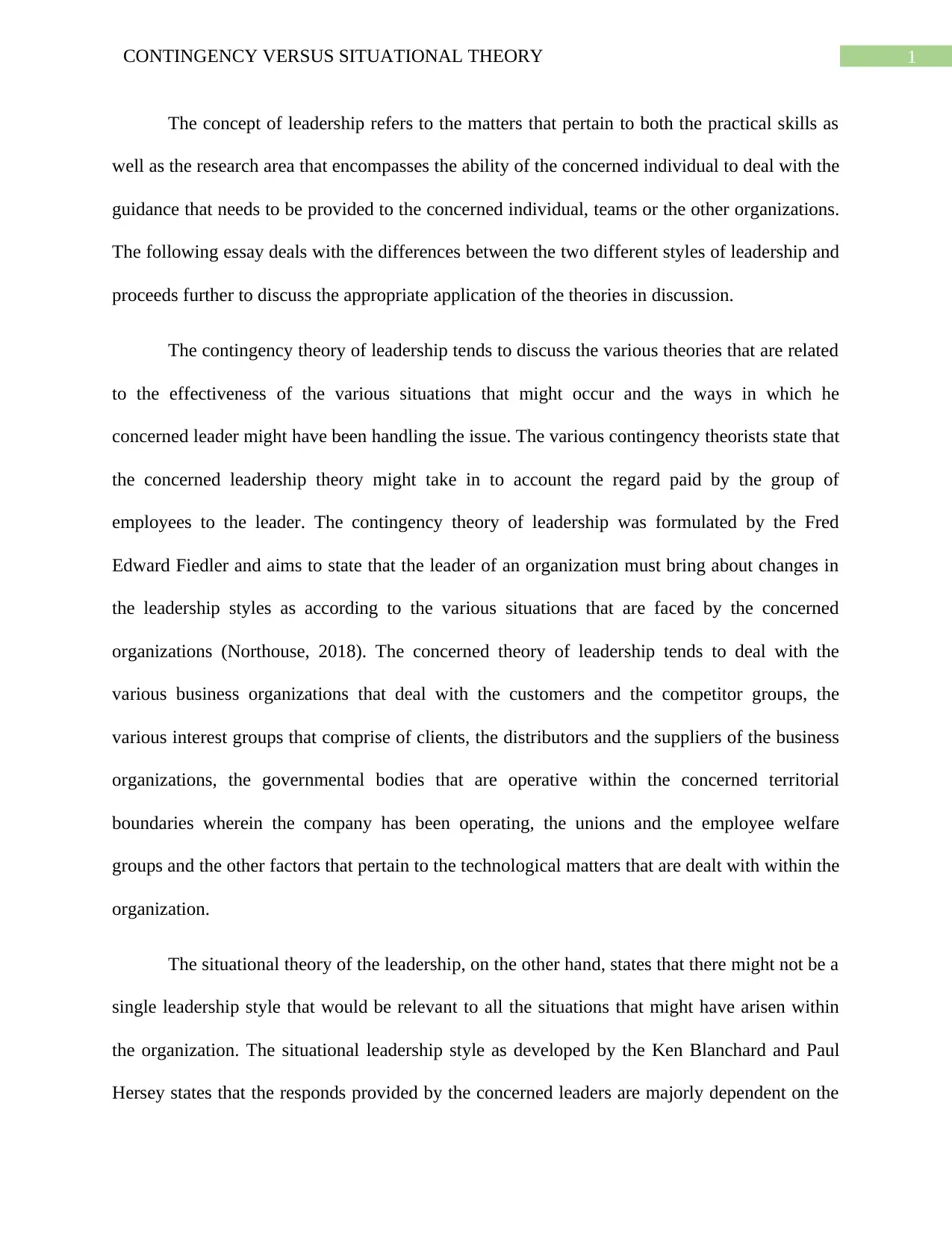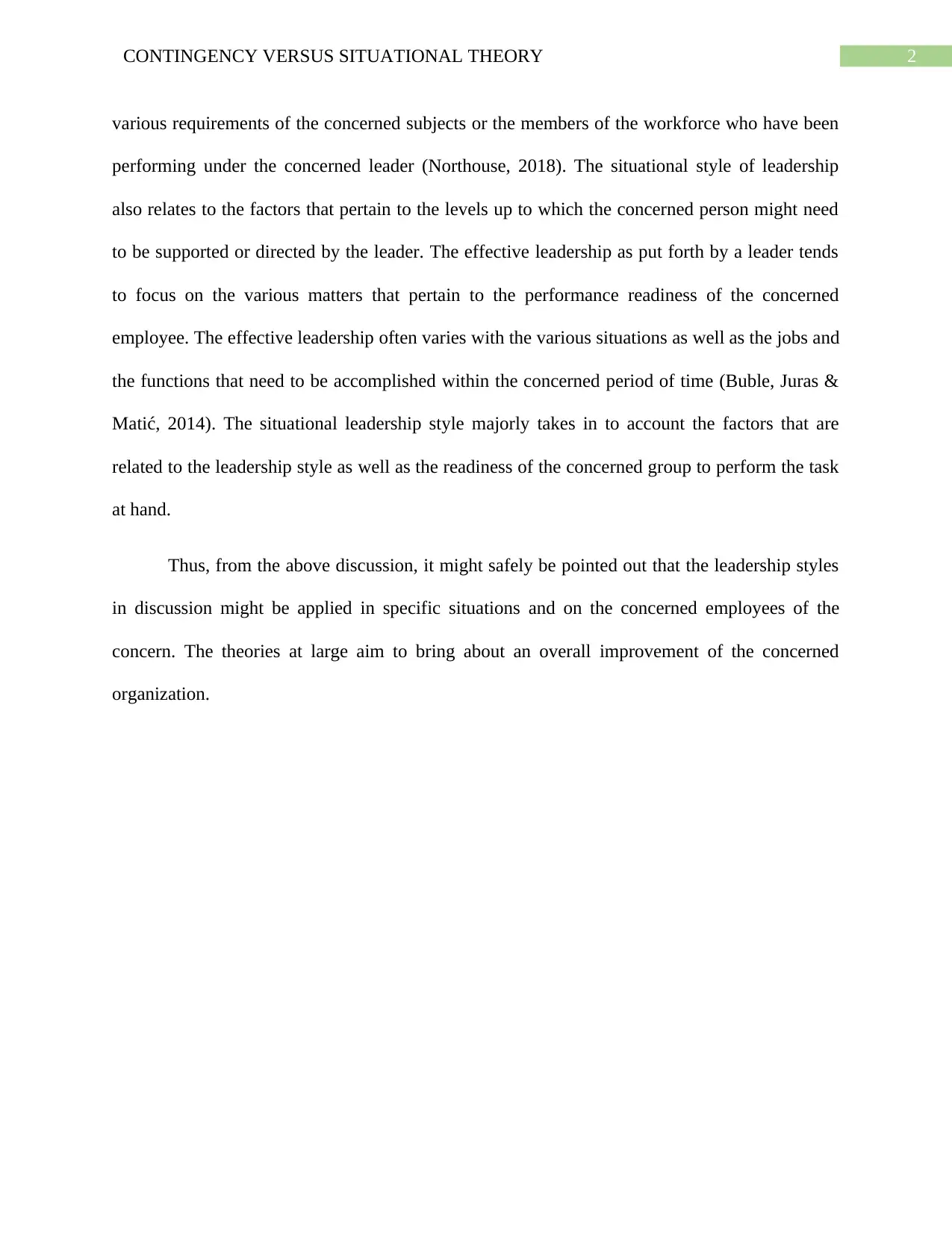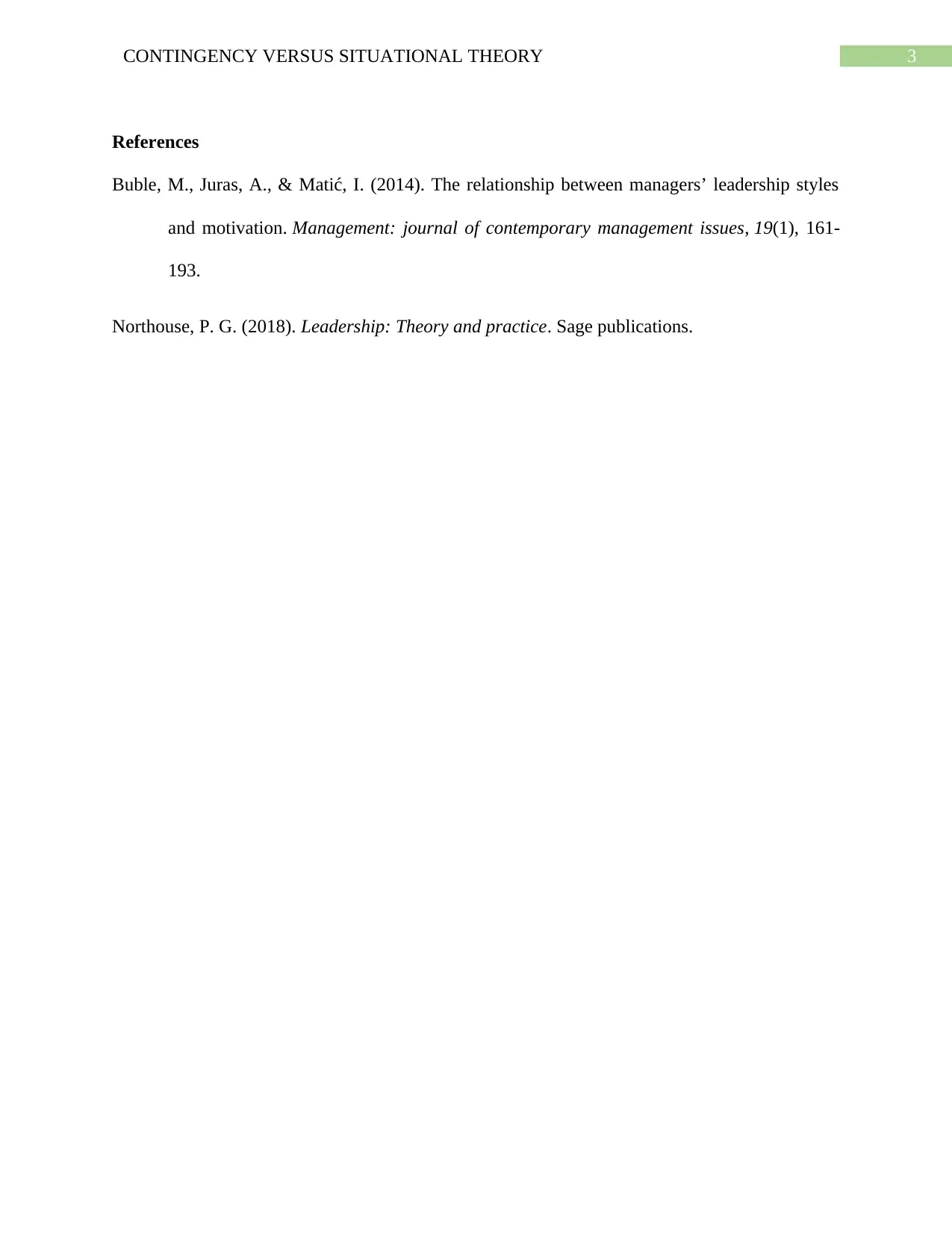Contingency and Situational Leadership: A Comparative Analysis
VerifiedAdded on 2023/06/09
|4
|646
|203
Essay
AI Summary
This essay delves into the core concepts of contingency and situational leadership theories, providing a comparative analysis of their principles and applications. It begins by defining leadership and highlighting the significance of leadership styles. The essay then explores the contingency theory, emphasizing the importance of adapting leadership styles to different situations, as proposed by Fred Fiedler. It examines the key elements of the contingency theory, including factors related to the group of employees, customers, competitors, and governmental bodies. The situational leadership theory, developed by Ken Blanchard and Paul Hersey, is then presented, focusing on the idea that effective leadership depends on the readiness of the employees. The essay concludes by emphasizing the importance of applying these theories to improve organizational performance, offering practical insights into how these leadership styles can be used to enhance leadership capabilities. The content also references supporting academic research on the topic.
1 out of 4










![[object Object]](/_next/static/media/star-bottom.7253800d.svg)